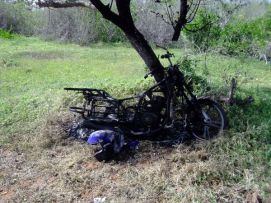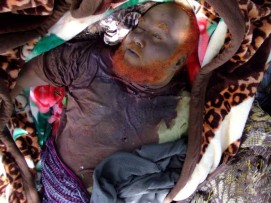Al-Shabaab and the United States Africa Command (AFRICOM) dispute the nature of casualties following a series of drone strikes in Somalia’s Jubaland region — part of an ongoing competition to shape public information in the fog of war.
According to reporting from CNN and an official AFRICOM statement, American troops called for air strikes after an operation with Somali forces encountered a potentially dangerous confrontation with al-Shabaab:
“During the Somali-led counterterrorism operation, a group of armed al-Shabaab terrorists posed an imminent threat to Somali-led and US forces. In response, the US conducted a self-defense strike against the armed militant group to neutralize the threat,” Samantha Reho, a spokesperson for Africa Command, told CNN.
The two additional strikes against the original objective of the raid were carried out under the new authorities, which permit such strikes in a geographically defined area.
AFRICOM claimed the strikes killed seven militants, but unlike other instances, it did not provide any names of the deceased — leaving the question open of which militants were targeted in the operation.
Al-Shabaab apparently saw an opportunity to fill the information gap with its own propaganda. It published photos and names of those who it claimed were seven victims of the attack — all alleged members of a local family. The pictures also showed destruction to a house and motorbike, as well as locals digging graves for the deceased. The village in which the strike occurred, called Sheikh Ahmed Yare, was named after the father of Sheikh Mohamed, who was reportedly killed in the strike.
What’s more: pro-Shabaab media added many other provocative details that did not appear in any English-language sources, including a claim that joint-U.S./Somali forces shot dead one of the injured survivors of the strike upon entering the site (which the article said explained a bullet hole in one of the bodies.)
Clearly, the intention was to incite anger among Somali-language audiences in a context in which very few other media outlets could corroborate the veracity of these claims.
The information war campaign often comes down to the credibility of the messenger and how much evidence the messenger is willing to provide to back up its narratives. It took weeks for the Pentagon to admit its fatal error last September when an errant drone strike killed local Somali forces instead of al-Shabaab.
Al-Shabaab is obviously not an objective messenger either, as the group knowingly exploits the dearth of other media outlets in its areas to frame developments in a manner beneficial to the group’s goals. But, the scarcity of information provided by the United States allows al-Shabaab to fill the gap with sympathetic perspectives and often provocative images intended to delegitimize American messaging.
Categories: al-Shabaab, Int'l Community in Somalia, Uncategorized











Leave a comment